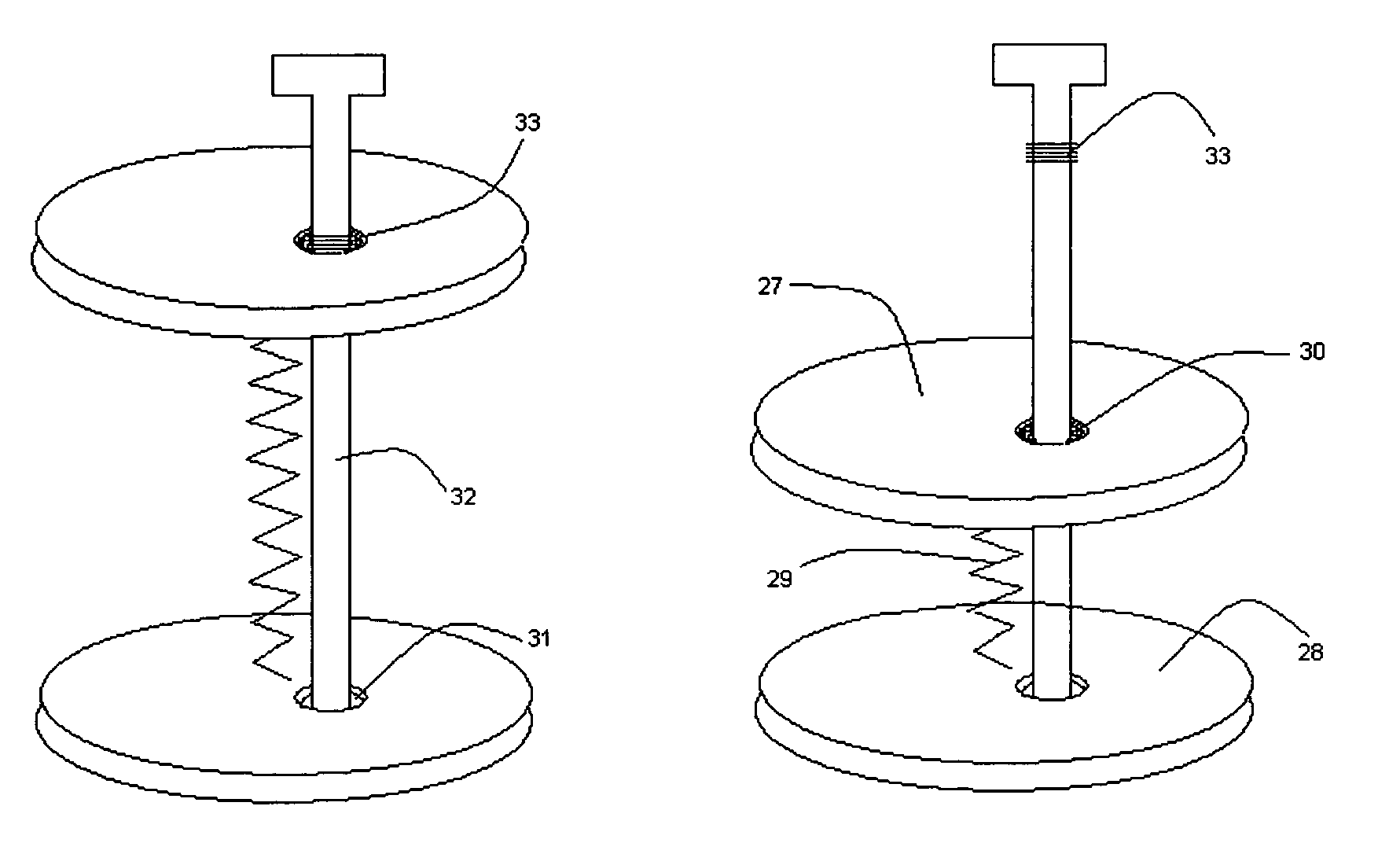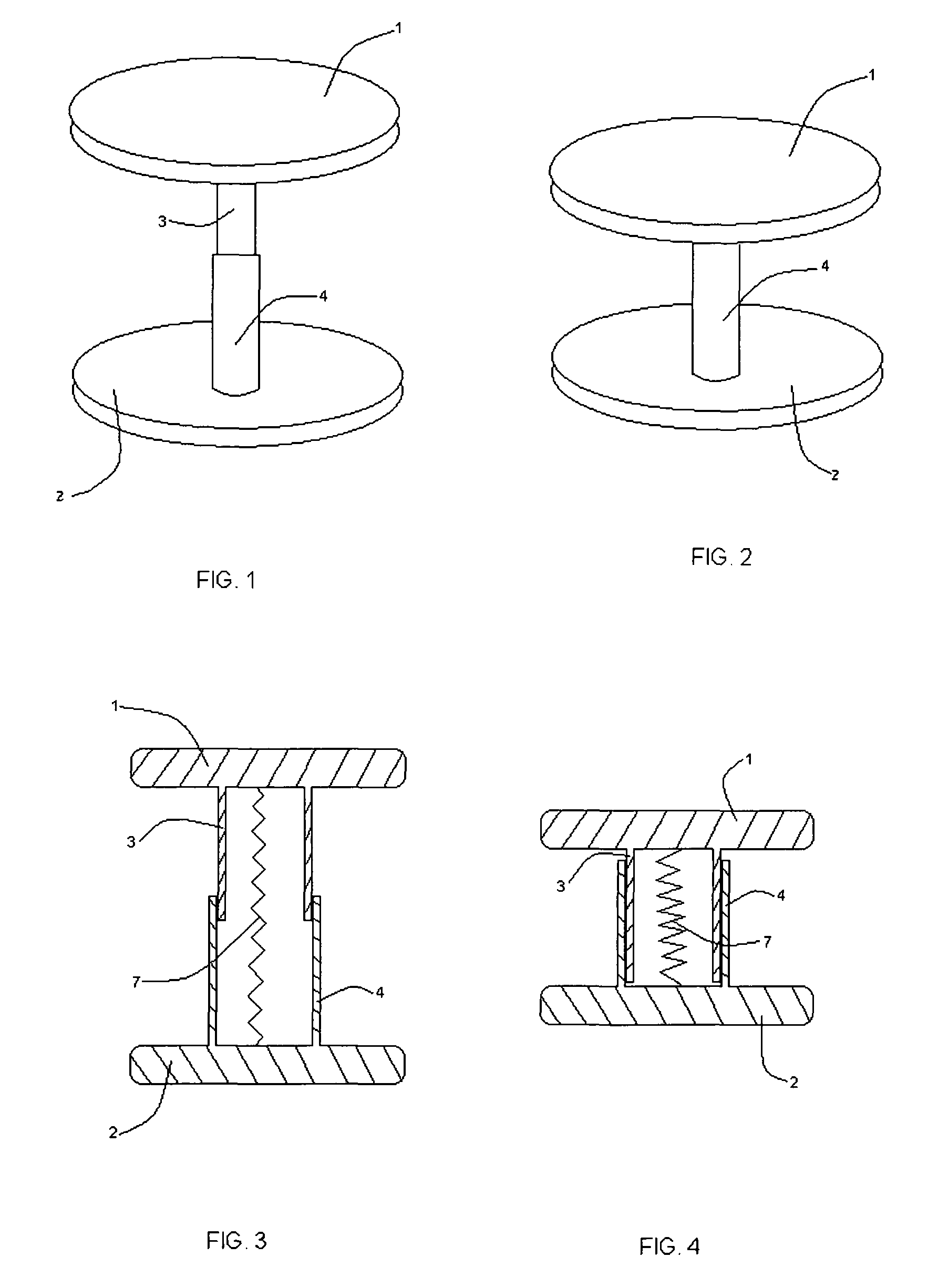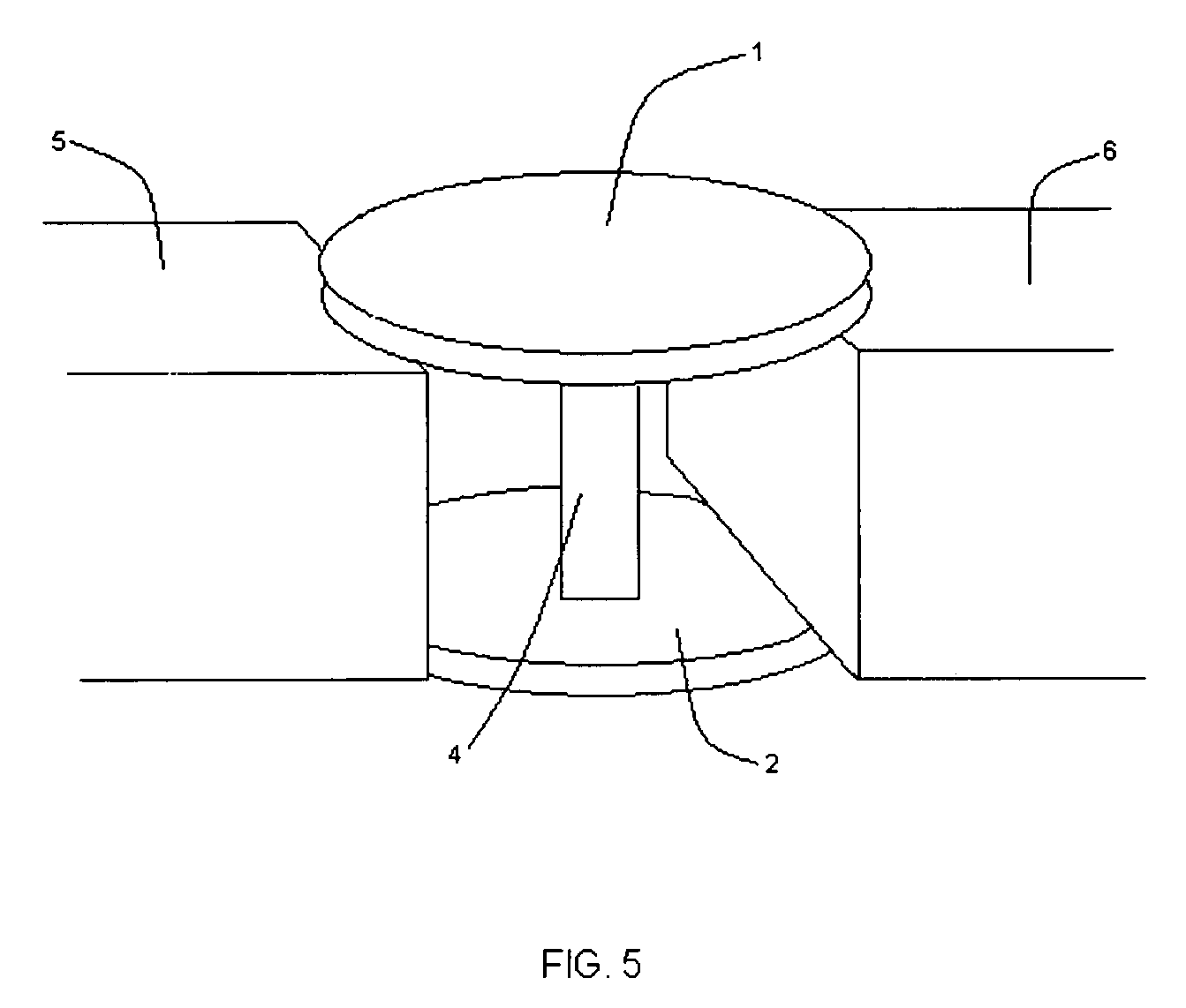Cranial fixation device
a technology for fixing devices and cranial bones, which is applied in the field of cranial bones fixation devices, can solve the problems of prolonging the procedure, reducing the safety of cranial bones, and further complicating and prolonging the procedur
- Summary
- Abstract
- Description
- Claims
- Application Information
AI Technical Summary
Benefits of technology
Problems solved by technology
Method used
Image
Examples
Embodiment Construction
[0075]The present invention provides for an easier and faster cranial fixation as well as easy removal in cases of re-operation. The cranial fixation device as shown in FIGS. 1 and 2 comprise of a head 1 with an extension 3 and a head 2 with an extension 4. The extensions 3 and 4 are telescopic and allow for distraction or compression of the heads relative to each other. FIG. 1 shows the telescopic extensions 3 and 4 in a distracted position and FIG. 2 shows the extensions in a compressed position whereby the extension 3 is contained within the extension 4. FIGS. 3 and 4 illustrate the cross sectional longitudinal view of the cranial fixation device. FIG. 3 shows the two heads 1 and 2 along with their telescopic extensions 3 and 4 in a distracted position. The spring 7 is positioned inside the hollow extensions 3 and 4 and connects the two heads 1 and 2. The spring could also be positioned outside the telescopic connectors, which would also provide for a smaller diameter or width of...
PUM
 Login to View More
Login to View More Abstract
Description
Claims
Application Information
 Login to View More
Login to View More - R&D
- Intellectual Property
- Life Sciences
- Materials
- Tech Scout
- Unparalleled Data Quality
- Higher Quality Content
- 60% Fewer Hallucinations
Browse by: Latest US Patents, China's latest patents, Technical Efficacy Thesaurus, Application Domain, Technology Topic, Popular Technical Reports.
© 2025 PatSnap. All rights reserved.Legal|Privacy policy|Modern Slavery Act Transparency Statement|Sitemap|About US| Contact US: help@patsnap.com



